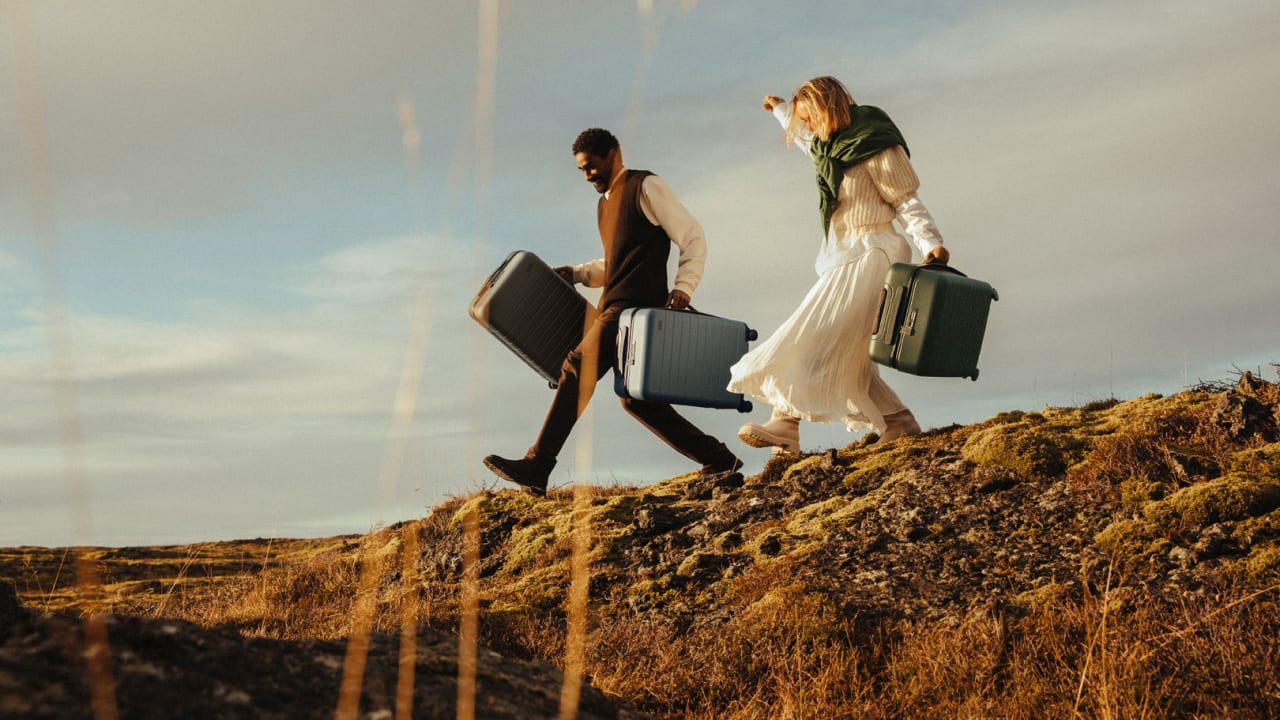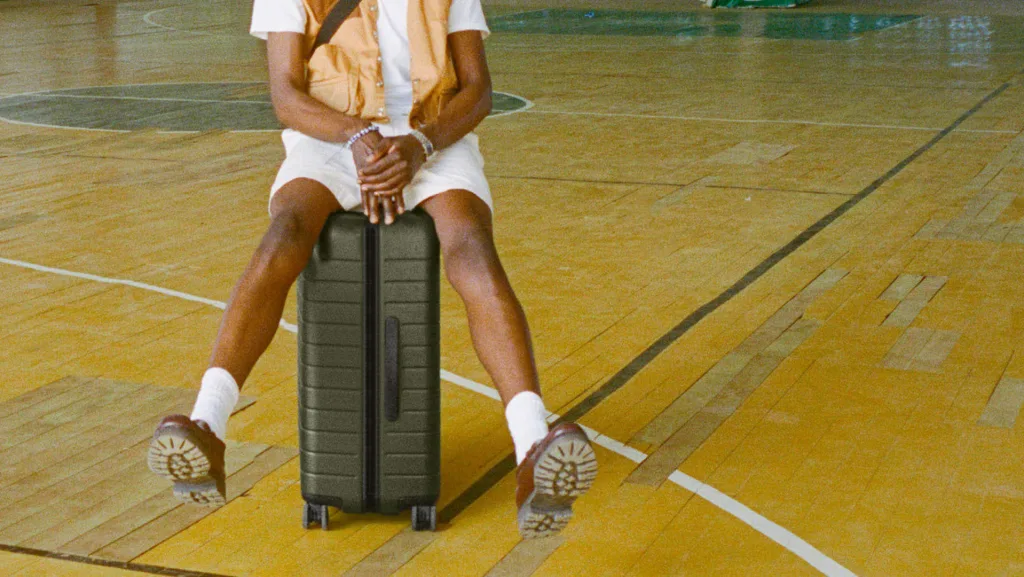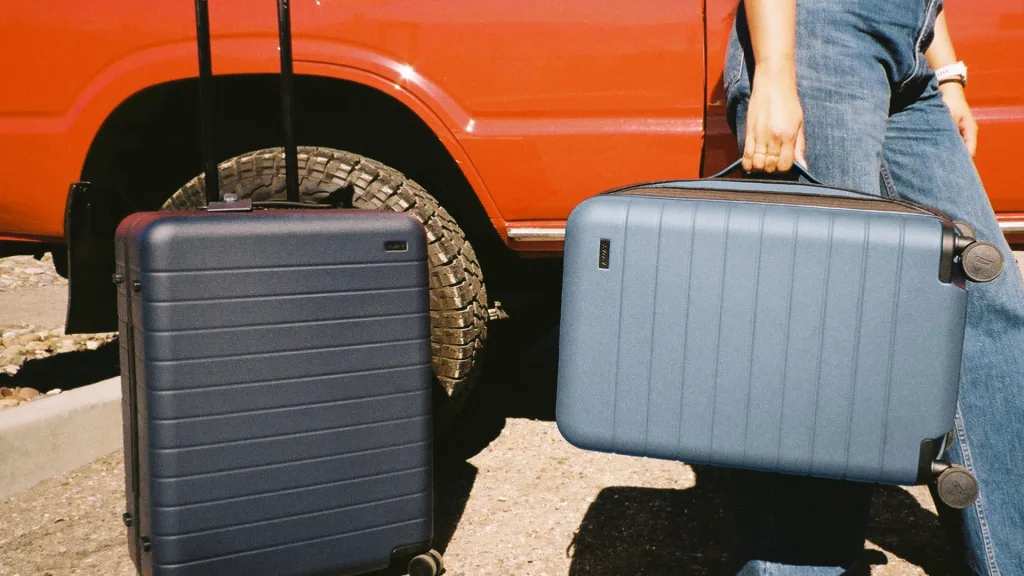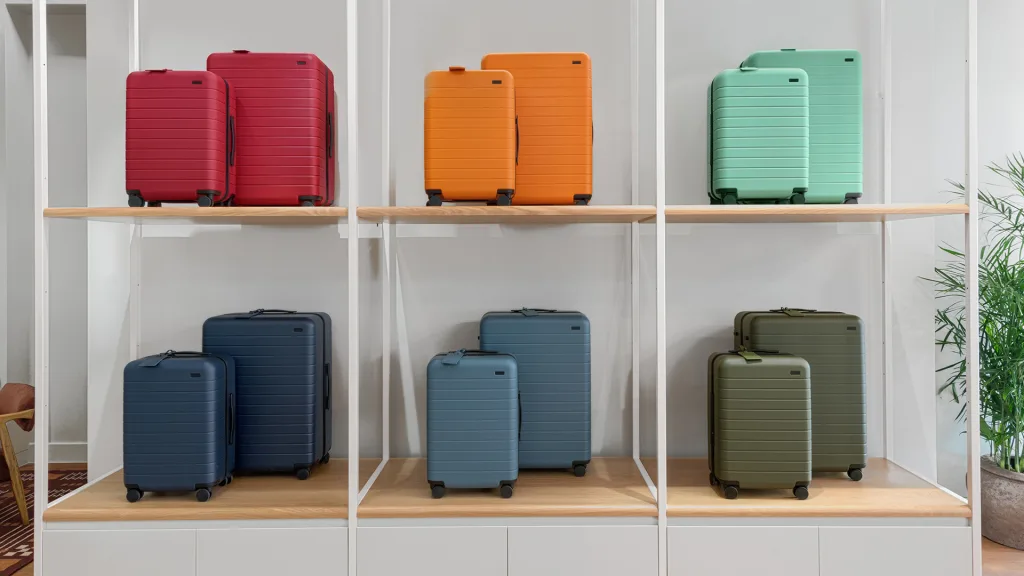You can finally buy Away luggage in stores. You’ll never guess which one
When Away launched nine years ago, most people would never have considered buying a suitcase online. Today, that’s changed. Millions of people have now bought their luggage on the internet, sight unseen. But there’s still a segment of the population that prefers to buy luggage at a store. Away wants to make it easier for them to do so. This Friday, Away is launching at the outdoor retailer Dick’s Sporting Goods. On the surface, it seems like an unusual partnership, given that Away luggage tends to appeal to trendy millennials, while Dick’s caters to middle American sports lovers. But Away argues that it’s a strategic partnership that will allow the brand to get more exposure than ever. [Photo: Away] Jen Rubio and Steph Korey founded Away in 2015 after spending several years at Warby Parker, a pioneer in the direct-to-consumer movement. Unlike brands of the past, this new generation of startups didn’t launch at department stores or retailers. They believed that by selling directly through their websites and their own fleet of stores they would be able to sell products at better prices, without the middleman markup. And they would better control their relationship with the customer. [Photo: Away] Over time, however, it’s become clear that if brands want to reach a bigger audience, it helps to partner with an major retailer that has a large, established customer base. That’s why Glossier is now in Sephora and Harry’s is now in Target. “Beauty brands have a clear, proven path when it comes to expanding into retail,” says Rubio, Away’s CEO. “But for luggage, it’s not as straightforward.” Rubio explored many different retailers, before reaching out to Dick’s. Some already had competing luggage brands in-store. Target, for instance, launched its own in-house brand of suitcases in 2020 that look like Away copycats. Other retailers didn’t have a lot of floor space in stores to create an immersive brand experience around Away’s suitcases. Then Rubio remembered Dick’s, a store she visited as a child to buy sports gear. The retailer tends to have very large footprint stores, and they don’t carry any other luggage brands. And Dick’s now has an new concept called Dick’s House of Sport, which is a 100,000-square-foot store that includes things like climbing walls and batting cages. “It gives brands enough space to really introduce itself to customers,” she says. [Photo: Away] Dick’s also saw how the brand would be relevant to its customers. One of the brand’s key audiences is families whose kids play competitive sports and frequently travel to games. “At first, it seems like a head-scratcher,” says Rubio. “But then you see all the ways it makes sense.” Away is at a point in its trajectory where it needs to scale. In the first four years in business, it grew quickly, with the help of $156 million in venture funding, which valued the company at $1.4 billion. But then, it ran into roadblocks. In late 2019, The Verge published a story in which employees accused Korey of creating a toxic work environment. She departed in 2020. Then the pandemic hit, which drove travel to a standstill and led to a 90% drop in revenue. Last year, Bloomberg reported that Away was looking for a buyer. In this context, it makes sense for Away to be targeting new markets. And while marketing its suitcases to Dick’s customers will be a new experience, it could be a massive opportunity for Away. But this means that Away will have to evolve its brand beyond young professionals who spend their weekends in exotic destinations. It’ll have to appeal to soccer moms and middler schoolers headed to their away games. “There are two ways for startups to grow,” Rubio points out. “We can expand our audience, or we can make new products for our existing customers. We’re doing both.”

When Away launched nine years ago, most people would never have considered buying a suitcase online. Today, that’s changed. Millions of people have now bought their luggage on the internet, sight unseen.
But there’s still a segment of the population that prefers to buy luggage at a store. Away wants to make it easier for them to do so.
This Friday, Away is launching at the outdoor retailer Dick’s Sporting Goods. On the surface, it seems like an unusual partnership, given that Away luggage tends to appeal to trendy millennials, while Dick’s caters to middle American sports lovers. But Away argues that it’s a strategic partnership that will allow the brand to get more exposure than ever.

Jen Rubio and Steph Korey founded Away in 2015 after spending several years at Warby Parker, a pioneer in the direct-to-consumer movement. Unlike brands of the past, this new generation of startups didn’t launch at department stores or retailers. They believed that by selling directly through their websites and their own fleet of stores they would be able to sell products at better prices, without the middleman markup. And they would better control their relationship with the customer.

Over time, however, it’s become clear that if brands want to reach a bigger audience, it helps to partner with an major retailer that has a large, established customer base. That’s why Glossier is now in Sephora and Harry’s is now in Target. “Beauty brands have a clear, proven path when it comes to expanding into retail,” says Rubio, Away’s CEO. “But for luggage, it’s not as straightforward.”
Rubio explored many different retailers, before reaching out to Dick’s. Some already had competing luggage brands in-store. Target, for instance, launched its own in-house brand of suitcases in 2020 that look like Away copycats. Other retailers didn’t have a lot of floor space in stores to create an immersive brand experience around Away’s suitcases.
Then Rubio remembered Dick’s, a store she visited as a child to buy sports gear. The retailer tends to have very large footprint stores, and they don’t carry any other luggage brands. And Dick’s now has an new concept called Dick’s House of Sport, which is a 100,000-square-foot store that includes things like climbing walls and batting cages. “It gives brands enough space to really introduce itself to customers,” she says.

Dick’s also saw how the brand would be relevant to its customers. One of the brand’s key audiences is families whose kids play competitive sports and frequently travel to games. “At first, it seems like a head-scratcher,” says Rubio. “But then you see all the ways it makes sense.”
Away is at a point in its trajectory where it needs to scale. In the first four years in business, it grew quickly, with the help of $156 million in venture funding, which valued the company at $1.4 billion. But then, it ran into roadblocks. In late 2019, The Verge published a story in which employees accused Korey of creating a toxic work environment. She departed in 2020. Then the pandemic hit, which drove travel to a standstill and led to a 90% drop in revenue. Last year, Bloomberg reported that Away was looking for a buyer.
In this context, it makes sense for Away to be targeting new markets. And while marketing its suitcases to Dick’s customers will be a new experience, it could be a massive opportunity for Away. But this means that Away will have to evolve its brand beyond young professionals who spend their weekends in exotic destinations. It’ll have to appeal to soccer moms and middler schoolers headed to their away games.
“There are two ways for startups to grow,” Rubio points out. “We can expand our audience, or we can make new products for our existing customers. We’re doing both.”






















